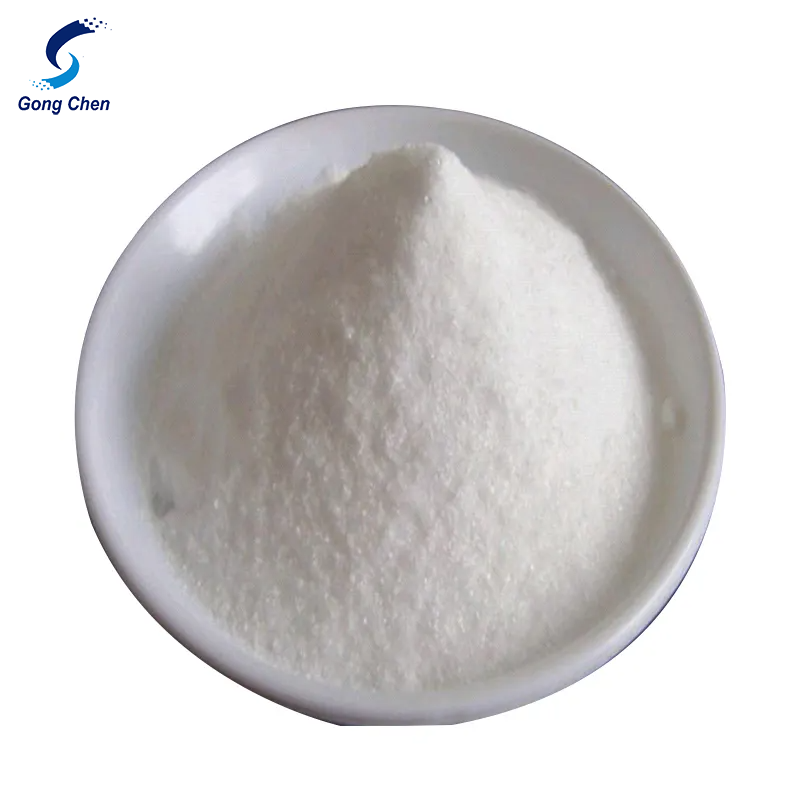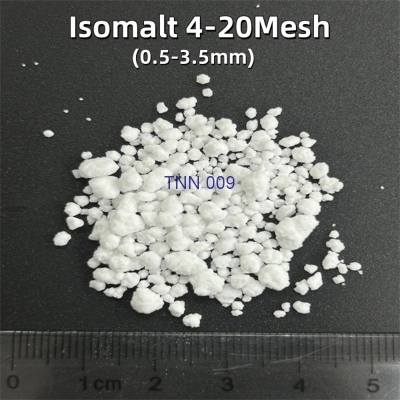-
Categories
-
Pharmaceutical Intermediates
-
Active Pharmaceutical Ingredients
-
Food Additives
- Industrial Coatings
- Agrochemicals
- Dyes and Pigments
- Surfactant
- Flavors and Fragrances
- Chemical Reagents
- Catalyst and Auxiliary
- Natural Products
- Inorganic Chemistry
-
Organic Chemistry
-
Biochemical Engineering
- Analytical Chemistry
-
Cosmetic Ingredient
- Water Treatment Chemical
-
Pharmaceutical Intermediates
Promotion
ECHEMI Mall
Wholesale
Weekly Price
Exhibition
News
-
Trade Service
The history of human use of food additives is as old as
the history of human civilization.
According to relevant data, the history of the use of food additives in China can be traced back to the Dawenkou culture period 6,000 years ago, when the invertase (sucrase) in the yeast for winemaking was a food additive and belonged to food enzyme preparations; More than 2,000 years ago, tofu was ordered with "brine", which is essentially a food coagulant
in food additives.
Recently, food additives have attracted renewed attention
.
In order to help consumers scientifically understand food additives, the following popular science tips are made:
the history of human civilization.
According to relevant data, the history of the use of food additives in China can be traced back to the Dawenkou culture period 6,000 years ago, when the invertase (sucrase) in the yeast for winemaking was a food additive and belonged to food enzyme preparations; More than 2,000 years ago, tofu was ordered with "brine", which is essentially a food coagulant
in food additives.
Recently, food additives have attracted renewed attention
.
In order to help consumers scientifically understand food additives, the following popular science tips are made:
First, what is food additives
Food additives refer to synthetic or natural substances
added to food for the purpose of improving food quality and color, aroma, taste and for the needs of preservative, preservation and processing technology.
Food additives can be manufactured by chemical synthesis, biological fermentation or natural extraction
.
The number of food additives approved worldwide is about 15,000, and there are more than 2,300 kinds of food additives approved for use in China, divided into 22 categories according to function, common antioxidants, leavening agents, colorants, preservatives, sweeteners, food spices, etc
.
added to food for the purpose of improving food quality and color, aroma, taste and for the needs of preservative, preservation and processing technology.
Food additives can be manufactured by chemical synthesis, biological fermentation or natural extraction
.
The number of food additives approved worldwide is about 15,000, and there are more than 2,300 kinds of food additives approved for use in China, divided into 22 categories according to function, common antioxidants, leavening agents, colorants, preservatives, sweeteners, food spices, etc
.
Second, the role of food additives
The use of food additives improves product quality, enriches food types, and meets consumers' diversified consumption needs for food.
Food additives mainly have the following functions: maintain or improve the nutritional value of the food itself; as a necessary ingredient or ingredient for certain special dietary foods; Improving the quality and stability of food products and improving their organoleptic properties; It is convenient for the production, processing, packaging, transportation or storage
of food.
Such as adding antioxidants to cooking oil to delay or hinder oil oxidation; Add colorants to the candy to give it a good color
.
Food additives mainly have the following functions: maintain or improve the nutritional value of the food itself; as a necessary ingredient or ingredient for certain special dietary foods; Improving the quality and stability of food products and improving their organoleptic properties; It is convenient for the production, processing, packaging, transportation or storage
of food.
Such as adding antioxidants to cooking oil to delay or hinder oil oxidation; Add colorants to the candy to give it a good color
.
Third, the rational use of food additives will not affect human health
In order to protect consumer health, the World Health Organization and the Food and Agriculture Organization of the United Nations have established a special Joint Expert Committee on Food Additives (JECFA) to establish globally harmonized food safety risk assessment principles and methods for food additives, and to carry out food safety risk assessment of food additives at the international level
.
The Codex Alimentarius Commission (CAC) establishes standards
for the use of food additives at the international level.
As one of the host countries of the Codex International Commission on Food Additives, China is in line with international standards and carries out food safety risk assessment of food additives in combination with the actual production, use and food consumption data of domestic food additives
.
.
The Codex Alimentarius Commission (CAC) establishes standards
for the use of food additives at the international level.
As one of the host countries of the Codex International Commission on Food Additives, China is in line with international standards and carries out food safety risk assessment of food additives in combination with the actual production, use and food consumption data of domestic food additives
.
The current National Standard for Food Safety: Standard for the Use of Food Additives (GB 2760-2014) stipulates the principles of the use of food additives, the varieties of food additives allowed, the scope of use, and the maximum amount of use or residue
。 The basic requirements that should be met when using food additives mainly include: should not cause any health hazards to the human body; Food spoilage should not be masked; Quality defects in the food itself or during processing should not be concealed or food additives used for the purpose of adulteration, adulteration or forgery; The nutritional value of the food itself should not be reduced; Reduce the amount of food used
in food as much as possible while achieving the desired effect.
。 The basic requirements that should be met when using food additives mainly include: should not cause any health hazards to the human body; Food spoilage should not be masked; Quality defects in the food itself or during processing should not be concealed or food additives used for the purpose of adulteration, adulteration or forgery; The nutritional value of the food itself should not be reduced; Reduce the amount of food used
in food as much as possible while achieving the desired effect.
Food products that use food additives should be marked on the food label for consumers to understand consumption
.
According to the requirements of relevant laws and regulations, China will carry out food safety risk assessment of food additives when setting the maximum amount of each food additive, and will consider the situation
of people of different ages, regions and genders eating a variety of foods a day and eating them for a long time.
Therefore, food additives are used within the specified range and dosage, which will not cause excessive intake and will not cause harm
to human health.
China also implements continuous and dynamic follow-up evaluation of food additives in use, re-evaluates food additives according to the latest research results at home and abroad, constantly adjusts the scope of use and usage, and bans the use
of some substances.
.
According to the requirements of relevant laws and regulations, China will carry out food safety risk assessment of food additives when setting the maximum amount of each food additive, and will consider the situation
of people of different ages, regions and genders eating a variety of foods a day and eating them for a long time.
Therefore, food additives are used within the specified range and dosage, which will not cause excessive intake and will not cause harm
to human health.
China also implements continuous and dynamic follow-up evaluation of food additives in use, re-evaluates food additives according to the latest research results at home and abroad, constantly adjusts the scope of use and usage, and bans the use
of some substances.
Fourth, food additives are not equivalent to illegal additives
In accordance with the provisions of the Food Safety Law, China has established a series of food additive management systems
.
Implement a strict approval system for food additives before marketing; Implement a production license system for food additive manufacturers during production; A food safety risk assessment system for food additives has been established during use, and more than 700 mandatory national food safety standards
covering the use of food additives, product requirements, production specifications, labeling and labeling, inspection methods, etc.
have been formulated.
In addition, the requirements for the production, operation and use of food additives and the corresponding supervision and management system, the import and export management system of food additives, etc
.
have been established.
.
Implement a strict approval system for food additives before marketing; Implement a production license system for food additive manufacturers during production; A food safety risk assessment system for food additives has been established during use, and more than 700 mandatory national food safety standards
covering the use of food additives, product requirements, production specifications, labeling and labeling, inspection methods, etc.
have been formulated.
In addition, the requirements for the production, operation and use of food additives and the corresponding supervision and management system, the import and export management system of food additives, etc
.
have been established.
Food additives are safe
when used legally.
Relevant national notification reports show that so far, none of the food safety incidents that have caused harm to human health in China have been caused by the legal use of food additives
.
The illegal acts of "two supers and one non-food" such as using food additives beyond the scope and exceeding the limit and adding non-edible substances are the causes of
food safety problems.
For example, melamine in the "melamine" milk powder incident is not a food additive! Sudan red in the "Sudan Red Duck Egg" incident is not a food additive! In the "poisonous duck blood" incident, formalin is not a food additive! These are illegal additives to food
.
when used legally.
Relevant national notification reports show that so far, none of the food safety incidents that have caused harm to human health in China have been caused by the legal use of food additives
.
The illegal acts of "two supers and one non-food" such as using food additives beyond the scope and exceeding the limit and adding non-edible substances are the causes of
food safety problems.
For example, melamine in the "melamine" milk powder incident is not a food additive! Sudan red in the "Sudan Red Duck Egg" incident is not a food additive! In the "poisonous duck blood" incident, formalin is not a food additive! These are illegal additives to food
.
China's Food Safety Law expressly prohibits the production and operation of food that uses food additives beyond the scope and limit; Food produced from non-food raw materials, or foods with chemical substances other than food additives and other substances that may endanger human health
.
Food additives are completely different
from illegal additives.
In order to further crack down on the illegal addition of non-edible substances and abuse of food additives in food production, sales and catering services, market supervision and other departments have carried out a series of special rectifications, and in the past ten years, six batches of "List of Non-edible Substances and Food Additives that May Be Illegally Added to Food and Food Additives that Are Easy to Abuse" have been issued successively.
.
Food additives are completely different
from illegal additives.
In order to further crack down on the illegal addition of non-edible substances and abuse of food additives in food production, sales and catering services, market supervision and other departments have carried out a series of special rectifications, and in the past ten years, six batches of "List of Non-edible Substances and Food Additives that May Be Illegally Added to Food and Food Additives that Are Easy to Abuse" have been issued successively.
December 12, 2022







